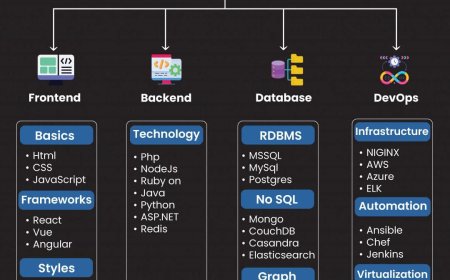Enhance Trust and Loyalty with Expert Banking Customer Service Solutions
This holistic approach to service is what transforms a simple banking interaction into an opportunity to solidify a lasting relationship. The competitive edge truly lies in an institution's ability to consistently exceed expectations, making customers feel valued, heard, and financially secure.
In today's rapidly evolving financial landscape, the bedrock of any successful bank is no longer solely its financial products or competitive interest rates. While these elements remain crucial, an increasingly discerning customer base now prioritizes an experience that is seamless, personalized, and, most importantly, trustworthy. In this environment,Banking Customer Service Solutionshave emerged not merely as a support function, but as a core strategic imperative, directly impacting customer trust, fostering unwavering loyalty, and ultimately driving sustainable growth.
The modern banking consumer expects more than just a transaction; they seek a relationship built on understanding, responsiveness, and reliability. Digital disruption has empowered customers with more choices and higher expectations, forcing financial institutions to rethink their engagement models. Gone are the days when a limited set of channels and rigid processes sufficed. Today, delivering expertcustomer servicesacross multiple touchpoints, from the traditional branch and phone to digital platforms, is non-negotiable. This holistic approach to service is what transforms a simple banking interaction into an opportunity to solidify a lasting relationship. The competitive edge truly lies in an institution's ability to consistently exceed expectations, making customers feel valued, heard, and financially secure.
The Shifting Paradigm of Banking Customer Service
Historically, banking interactions were often perceived as formal, even intimidating. Customers visited branches for most needs, and phone lines were primarily for basic inquiries. However, the advent of internet banking, mobile apps, and a generation of digitally native customers has profoundly shifted this paradigm. Today's consumer expects convenience, speed, and proactive engagement. They anticipate their bank to not only resolve issues efficiently but also to understand their unique financial journey and offer relevant advice.
This shift has transformedcustomer servicesfrom a cost center into a value creator. A well-executed service experience can differentiate a bank in a crowded market, attracting new clients and retaining existing ones. Conversely, poor service can lead to immediate churn and significant reputational damage in the age of instant social media feedback. Banks are now recognizing that investing in robustBanking Customer Service Solutionsis not an expense, but a vital investment in their brand equity and future profitability. It's about moving from a transactional mindset to a relational one, nurturing long-term partnerships with their clientele.
The Pillars of Expert Banking Customer Service Solutions
To truly enhance trust and loyalty,Banking Customer Service Solutionsmust be built upon several foundational pillars:
- Accessibility and Responsiveness:Customers expect to reach their bank through their preferred channel, at any time. This means offering a wide array of options, including well-staffed branches, intuitive mobile apps, responsive email support, active social media engagement, and, critically, a highly efficientinbound call center. The ability to get a quick, accurate answer, or have a complex issue resolved without lengthy wait times, is paramount. Responsiveness also extends to proactive communication informing customers about potential issues, offering relevant updates, or even sending helpful financial tips.
- Personalization and Proactive Engagement:Generic interactions no longer suffice. Moderncustomer servicesdemand a deep understanding of individual customer needs, preferences, and financial goals. Leveraging data analytics allows banks to tailor product recommendations, offer personalized financial advice, and anticipate future needs. Proactive engagement might involve alerts about unusual account activity, personalized spending insights, or even gentle nudges towards savings goals. This level of personalized attention makes customers feel truly valued and understood, fostering a sense of partnership rather than just being another account number.
- Empathy and Expert Problem Resolution:Banking often involves sensitive financial matters, and customers may be reaching out during times of stress or confusion. Frontline staff, whether in a branch or theinbound call center, must be trained not only in product knowledge but also in emotional intelligence and empathy. Empowering employees to resolve issues at the first point of contact whenever possible significantly boosts customer satisfaction. For complex issues, a clear escalation path and consistent follow-up are essential. The goal is to move beyond simply answering questions to truly solving problems and alleviating customer concerns effectively.
- Security and Trust:In the financial sector, trust is the ultimate currency. AllBanking Customer Service Solutionsmust prioritize the security and privacy of customer data. Robust authentication processes, encrypted communications, and well-trained staff who understand data protection protocols are non-negotiable. Customers need to feel confident that their sensitive information is handled with the utmost care and professionalism at every interaction point. A breach of trust, even perceived, can have catastrophic consequences for customer relationships.
The Crucial Role of the Inbound Call Center
Despite the rise of digital self-service options, theinbound call centerremains an indispensable component of comprehensiveBanking Customer Service Solutions. For many customers, especially when dealing with complex transactions, urgent issues, or emotionally charged situations (like fraud or identity theft), speaking to a human voice provides a level of reassurance and clarity that digital channels cannot fully replicate.
Theinbound call centeris often the first, and sometimes only, human point of contact for critical issues. It serves as a vital safety net and a direct line for customers seeking immediate assistance or nuanced advice that requires a personal touch. Therefore, investing in a well-equipped and expertly staffedinbound call centeris paramount. This involves:
- Skilled & Empathetic Agents:Training agents not only on product knowledge but also on active listening, problem-solving, and de-escalation techniques is crucial. They are the bank's frontline ambassadors, and their ability to convey empathy and professionalism directly impacts customer perception.
- Advanced Technology:Moderninbound call centeroperations leverage technologies such as Interactive Voice Response (IVR) systems for efficient routing, Customer Relationship Management (CRM) systems for a unified view of customer history, and speech analytics to identify trends and areas for improvement.
- Integration with Omnichannel Strategy:The call center must be seamlessly integrated with othercustomer serviceschannels. A customer starting a query online should be able to transition to a phone call without having to repeat their information. This fluid experience reduces friction and frustration.
- Focus on First Contact Resolution (FCR):Empowering agents to resolve issues during the initial call significantly improves customer satisfaction and reduces operational costs. This requires comprehensive training, access to relevant information, and appropriate decision-making authority.
While chatbots and AI can handle routine queries, theinbound call centerexcels at providing the human connection, complex problem-solving, and emotional support that builds deep trust and loyalty in banking relationships.
Leveraging Technology for Superior Solutions
Technology is not just supporting; it's transformingBanking Customer Service Solutions.
- Artificial Intelligence (AI) and Machine Learning (ML):AI-powered chatbots can handle a high volume of routine inquiries 24/7, freeing up human agents for more complex tasks. ML algorithms can analyze customer data to predict needs, identify potential risks, and personalize interactions, enhancing both efficiency and customer experience.
- Customer Relationship Management (CRM) Systems:A robust CRM system provides a single, unified view of every customer's interactions across all channels. This allows agents, whether in the branch or theinbound call center, to access comprehensive customer history, preferences, and previous issues, ensuring a consistent and informed service experience.
- Omnichannel Integration Platforms:True omnichannel means frictionless transitions between touchpoints. A customer might start a loan application on their mobile app, continue it on a desktop, call theinbound call centerfor clarification, and then visit a branch to finalize documentsall without having to re-enter information or explain their situation multiple times. This seamless journey is key to moderncustomer services.
- Data Analytics:Beyond personalization, analyzing service interaction data can provide invaluable insights into customer pain points, common issues, and areas for process improvement. This continuous feedback loop is vital for refiningBanking Customer Service Solutionsand staying ahead of customer expectations.
Measuring Success and Continuous Improvement
The effectiveness ofBanking Customer Service Solutionsmust be rigorously measured and continuously improved. Key performance indicators (KPIs) include Customer Satisfaction Scores (CSAT), Net Promoter Score (NPS), First Contact Resolution (FCR) rate, Average Handling Time (AHT) in theinbound call center, and customer churn rates.
Regular customer feedback through surveys, social media monitoring, and direct interviews provides crucial insights. This feedback, combined with internal performance data, should drive ongoing training initiatives, process optimizations, and technology enhancements. A culture of continuous learning and adaptation is essential to ensure thatcustomer servicesevolve with customer needs and market dynamics.
Conclusion
In the highly competitive and increasingly digital financial sector, expertBanking Customer Service Solutionsare no longer a luxury but a fundamental necessity. They are the cornerstone upon which enduring customer trust and loyalty are built. By prioritizing accessibility across all channels, including a highly efficientinbound call center, embracing personalization, fostering empathy, and strategically leveraging cutting-edge technology, banks can create a superior customer experience.
Investing in these solutions is an investment in the bank's future. It translates into stronger customer relationships, reduced churn, positive word-of-mouth referrals, and enhanced brand reputation. In an era where customers have more choices than ever, the banks that truly understand and prioritize their customer's needs, offering expert and empatheticcustomer services, will be the ones that thrive, securing greater trust and loyalty in the long run.





































